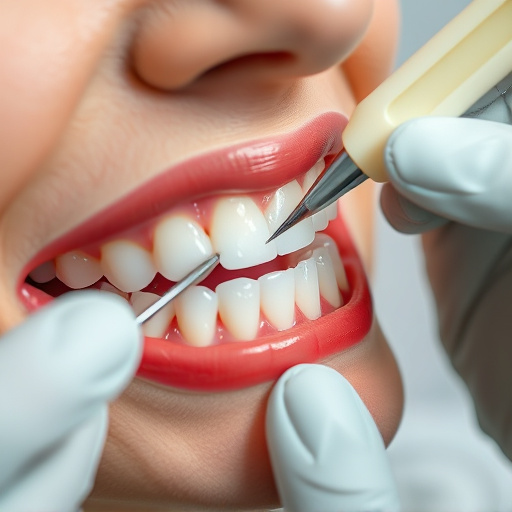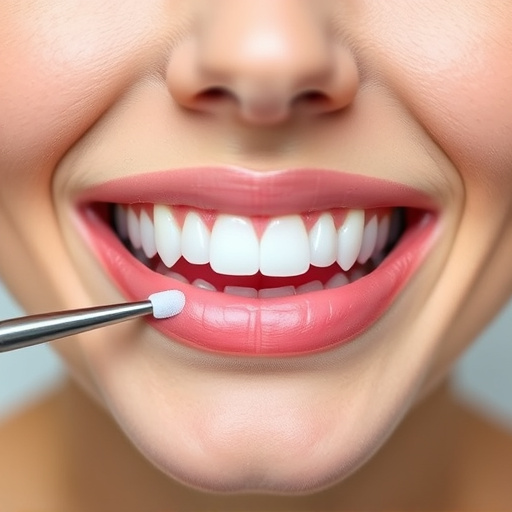Mini Dental Implants: Long-Lasting Tooth Support Explained
Mini dental implants offer a permanent, aesthetically pleasing solution for missing teeth, providing…….
In the ever-evolving landscape of oral healthcare, mini dental implants have emerged as a game-changer, offering innovative solutions for patients seeking better chewing function and aesthetic improvements. This comprehensive article aims to provide an in-depth exploration of mini dental implants, covering their definition, history, global impact, economic significance, technological advancements, regulatory framework, challenges, successful applications, and future prospects. By delving into these aspects, we will uncover the profound influence of this procedure on oral health care worldwide.
Mini dental implants, also known as small-diameter implants or miniature implants, are a modern dental restoration solution designed to replace missing teeth. These implants are characterized by their compact size, typically measuring 3-4 mm in diameter, making them suitable for cases where traditional dental implants might be considered too invasive or medically contraindicated.
The core components of a mini dental implant system include:
The concept of dental implants dates back centuries, with early attempts documented as far back as 400 BC in ancient China and Egypt. However, modern mini dental implants are a relatively recent development within the field of dentistry. The journey towards smaller implants began in the late 20th century when dentists sought to address limitations associated with traditional implant sizes.
The early 1980s saw significant breakthroughs, with researchers like Dr. Brannon and Dr. Zarb pioneering small-diameter implants for posterior teeth. Their work laid the foundation for further research and development, leading to improvements in design, materials, and surgical techniques. Today, mini dental implants are widely accepted as a safe and effective alternative for tooth replacement, especially in areas where bone density is lower or traditional implants pose higher risks.
Mini dental implants have gained global recognition and acceptance, with adoption rates varying across regions based on factors such as economic development, cultural preferences, and existing dental practices.
North America and Europe: These regions have been at the forefront of mini dental implant technology, with extensive research and clinical trials contributing to their widespread availability. Countries like the United States, Canada, and various European nations have seen a growing demand for this procedure due to advancing technologies and improved patient awareness.
Asia-Pacific: The Asia-Pacific region represents a significant market for mini dental implants, driven by increasing disposable incomes and rising health consciousness. Countries such as Japan, South Korea, and Australia have shown a marked growth in implant procedures, with patients embracing the aesthetic and functional benefits.
Latin America and Middle East: These regions are witnessing growing adoption rates, primarily due to improved access to dental care and the affordability of mini implants compared to traditional alternatives.
Several trends are driving the global impact of mini dental implants:
The global mini dental implant market is experiencing substantial growth, driven by the aforementioned trends and increasing demand for advanced dental care. According to a 2023 report by Grand View Research, the global dental implants market size was valued at USD 7.5 billion in 2021 and is expected to expand at a compound annual growth rate (CAGR) of 6.2% from 2022 to 2030. Within this broader market, mini implants are gaining traction, particularly in regions with growing middle-class populations.
The economic landscape for mini dental implants presents both opportunities and challenges:
| Opportunities | Challenges |
|---|---|
| Rising demand from aging populations in developed countries. | High initial investment costs for manufacturers and dental practices. |
| Growing market share in emerging economies. | Regulatory hurdles and varying legal frameworks across regions. |
| Potential for integration with digital dental technologies. | Competition from established dental restoration options. |
| Long-term cost savings for patients and healthcare systems. |
Mini dental implants contribute to economic systems by:
Technological advancements have played a pivotal role in shaping modern mini dental implants:
These technological advancements have had a profound impact on clinical practice:
The future of mini dental implants holds immense promise, with ongoing research focusing on:
The regulatory landscape for mini dental implants varies globally, reflecting the diverse dental practices and legal systems in different countries:
Regulatory frameworks significantly influence the development, pricing, and market access of mini dental implants:
Despite their many advantages, mini dental implants face several challenges:
Criticisms and concerns from patients and dental professionals include:
To address these challenges, several strategies can be employed:
A 65-year-old female patient in Japan presented with a missing lower incisor due to a previous accident. Her dental examination revealed inadequate bone volume for traditional implants, making mini dental implants an ideal solution. The procedure involved placing two mini implants in the mandible and connecting them to a custom-made porcelain crown.
Results: The patient experienced improved chewing function and aesthetic satisfaction, with no post-operative complications. X-rays at 12 months showed successful osseointegration, and the patient reported increased confidence in social situations due to her restored smile.
A 25-year-old male patient suffered multiple dental injuries in a cycling accident, resulting in the loss of several front teeth. Conventional implant options were deemed inappropriate due to his young age and limited bone volume. Dentists recommended mini implants as a temporary solution until he reached full maturity, at which point a traditional implant could be placed.
Treatment and Outcomes: The patient underwent mini implant placement, with two implants in the anterior maxilla. Temporary crowns were secured, allowing for proper healing and tissue regeneration. After 18 months, when bone density had improved, the mini implants were used as anchors for permanent porcelain bridges, providing a functional and aesthetic restoration.
An 82-year-old male patient with severe periodontitis and reduced bone density required tooth replacement. His dentist recommended mini dental implants due to his age and medical history. Four mini implants were placed in the lower jaw, and a fixed bridge was connected to them.
Follow-up: X-rays at 24 months showed excellent osseointegration, and the patient reported improved chewing function and increased confidence in social situations. The treatment provided a long-term solution without the need for frequent adjustments or replacements, commonly associated with traditional dentures.
The future of mini dental implants holds immense potential, with several growth areas and emerging trends:
To capitalize on these future prospects, various stakeholders can take strategic steps:
Mini dental implants represent a significant advancement in oral health care, offering patients a conservative, effective solution for missing teeth. As technology continues to evolve, these implants will play an increasingly important role in modern dentistry. By addressing technical challenges, refining clinical practices, and fostering global collaboration, the future of mini dental implants holds promise for improving the oral health and quality of life for countless individuals worldwide.

Mini dental implants offer a permanent, aesthetically pleasing solution for missing teeth, providing…….

Mini dental implants, tiny titanium posts less than 4 mm long, offer a modern, efficient, and cost-e…….